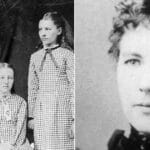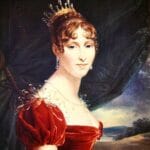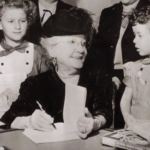This guide explores the life of Mary Grace Slattery, Arthur Miller’s first wife, offering a glimpse into her influence on the celebrated playwright and her own personal journey.
Discovering Mary Grace Slattery
Mary Grace Slattery, a name often overshadowed by the towering legacy of Arthur Miller, remains a captivating figure. While Miller’s life has been extensively documented, the story of his first wife has largely remained untold. This guide aims to shed light on the woman who shared his formative years and likely influenced the trajectory of his renowned career.
Early Life and Marriage
Born in Lakewood, Ohio, in 1915, Mary Grace’s path crossed with Arthur Miller’s at the University of Michigan in the late 1930s. Their romance blossomed amidst the bustling campus life, culminating in marriage in 1940. This union coincided with the very beginnings of Miller’s playwrighting career, likely playing a crucial role in shaping their shared experiences.
Mary Grace’s Influence
It’s probable that Mary Grace wasn’t merely a passive figure in Miller’s life, but an active participant in his development as a writer. We can imagine their conversations, her feedback on his early drafts, and the shared joys and struggles of a young couple embarking on their respective journeys. She may have inspired characters and themes that would later appear in his acclaimed plays, subtly weaving her presence into his literary achievements. This potential influence deserves further research, offering valuable insights into the creative process and the often-unsung contributions of those closest to iconic figures. Discover the equally compelling character of Marcia the outsiders and her significance within her own story.
A Period of Transformation
Their fifteen-year marriage spanned a period of immense change for Miller, as he evolved from an aspiring writer to one of America’s most celebrated playwrights. What was Mary Grace’s experience during this transformative period? How did she navigate the complexities of their evolving lives? These questions remain largely unanswered, offering intriguing possibilities for future exploration.
The Divorce and Its Aftermath
The marriage ultimately ended in divorce in 1956. The phrase “Slattery’s decision to ‘kick Miller out'” suggests a woman of agency and resilience, capable of making difficult choices. This detail challenges the traditional narrative and invites us to delve deeper into the dynamics of their relationship. What led to this pivotal moment? What were the underlying tensions that shaped their eventual separation? Learn about the similarly enigmatic Lewis Gratz Fell and his impact on a pivotal historical event.
Life After Miller
Following the divorce, Mary Grace dedicated herself to raising their two children, Jane and Robert. She navigated the challenges of single motherhood while striving to maintain a sense of normalcy for her family. While Miller’s life remained in the public eye, Mary Grace’s story faded into the background. This period of her life presents a rich area for research, offering a potential glimpse into her aspirations, struggles, and triumphs.
A Story Waiting to be Told
Exploring Mary Grace Slattery’s life provides a unique perspective on the often-hidden lives of the women behind famous men. By examining her potential influence on Miller’s work, her personal aspirations, and the impact of their relationship on her children, we can gain a more nuanced understanding of her life beyond the label of “Arthur Miller’s first wife.” Her story deserves to be told, not only to complete the picture of Arthur Miller’s life, but also to celebrate the individual journey of Mary Grace Slattery.
The Story of Mary Grace and Arthur
This section delves into the lesser-known narrative of Arthur Miller’s first marriage, offering a deeper look into his relationship with Mary Grace Slattery. While Miller’s life and works have been extensively studied, Mary’s story often remains in the shadows.
A Campus Romance
Mary Grace and Arthur met at the University of Michigan, likely in the late 1930s. They probably connected through a shared interest in theater, perhaps acting in plays together or collaborating behind the scenes. Their college romance blossomed, leading to their marriage in 1940 shortly after graduation. While this might appear to be a fairytale beginning, certain details suggest a more complex reality.
Early Signs of Strain
Almost immediately after their wedding, Miller embarked on a research trip, leaving Mary behind. This early separation suggests that there may have been underlying tensions from the outset. While the reason given was research related to his writing, newly married couples typically prioritize spending time together. This unusual start raises questions about the state of their relationship in those early days.
A Growing Divide
Over the next fifteen years, Miller’s career as a playwright flourished. His increasing success brought with it the demands of a burgeoning career and growing public attention. This likely strained their marriage. While Miller navigated the literary world, Mary focused on raising their two children, Jane and Robert. This imbalance may have created a growing distance between them. It’s possible that Mary felt isolated or overwhelmed, managing the practicalities of family life while her husband was increasingly consumed by his work.
The Divorce
By 1956, their marriage had reached a breaking point. Some sources suggest that Mary initiated the divorce, which is noteworthy considering the social norms of the era. This suggests she felt strongly about ending the marriage. That same year, Miller married Marilyn Monroe, an event that further obscured Mary’s story from public view. This highly publicized marriage likely overshadowed the previous chapter of Miller’s life, making it harder to piece together Mary’s perspective.
Unanswered Questions
The following table summarizes key events in their relationship:
| Key Events | Year |
|---|---|
| Meet at the University of Michigan | Late 1930s |
| Marriage | 1940 |
| Miller’s research trip shortly after wedding | 1940 |
| Growing career demands and marital strain | 1940s-1950s |
| Divorce; Miller marries Marilyn Monroe | 1956 |
What truly transpired in Arthur Miller’s first marriage? While some facts are known, much of Mary Grace’s experience remains a mystery. It’s important to remember that behind every public figure, there are often untold stories like Mary’s. While her life may be less documented, her role in Miller’s life is undeniable. She was present at the beginning, and their marriage, with its complexities and challenges, undoubtedly shaped the man and the writer he became. Ongoing research may eventually illuminate Mary Grace Slattery’s experience and her place in this intricate narrative.
Marilyn Monroe and Arthur Miller: A Closer Look
This section explores Arthur Miller’s second marriage, specifically focusing on his relationship with Marilyn Monroe. It’s crucial to understand the context of Miller’s life and previous relationships, including his fifteen-year marriage to Mary Grace Slattery, to fully appreciate the complexities of his marriage to Monroe.
How Old Was Marilyn Monroe When She Married Arthur Miller?
Marilyn Monroe was 30 years old when she married Arthur Miller on June 29, 1956. This marked a new chapter for both of them. For Marilyn, it was her third marriage, following previous unions with James Dougherty and Joe DiMaggio. For Arthur, as previously discussed, it was his second. Their wedding—a civil ceremony followed by a Jewish ceremony (Marilyn converted for Miller)—generated significant media attention. The ten-year age gap between them also fueled public discussion, though such age differences were not unusual at the time.
A Union of Two Worlds
This marriage brought together two prominent figures from seemingly different worlds – Hollywood and the literary scene. It was a union that captured public imagination. Some viewed it as a perfect match: the glamorous movie star and the brilliant intellectual. Others were skeptical, questioning the compatibility of their distinct personalities. Some theories suggest that their individual insecurities and vulnerabilities might have drawn them to each other, while others point to a shared desire for intellectual and artistic engagement. It’s important to acknowledge that determining the exact motivations behind any marriage, especially one in the public eye, is inherently challenging. We can only speculate based on available information and various perspectives offered by biographers and historians.
Life in the Spotlight
Their relationship unfolded under intense public scrutiny, with their every move documented and analyzed. This constant pressure probably added another layer of complexity to their relationship. Some experts believe Marilyn’s desire for intellectual validation and Miller’s admiration for her vulnerability were significant factors in their relationship. However, the degree to which these elements contributed to the overall health and longevity of their marriage remains open to debate. Their union, like any other, was likely influenced by a complex interplay of internal and external factors.
A Lasting Impact
While the intricacies of their bond may never be fully understood, the impact of this marriage on both their lives is undeniable. It influenced Miller’s work, notably the play After the Fall, which, despite Miller’s denials, is often interpreted as reflecting aspects of their relationship. The marriage also marked a significant period in Marilyn’s personal and professional life, a time of both growth and struggle. Their five-year marriage ended in divorce in 1961, leaving behind a legacy of intrigue and unanswered questions. Ongoing research continues to offer new interpretations and perspectives as more information becomes available. The story of Marilyn and Arthur serves as a reminder of the complexities of human relationships, particularly those lived under the watchful eye of the public.
Arthur Miller’s Wives: Beyond Marilyn
Arthur Miller, renowned playwright of Death of a Salesman and The Crucible, had several notable marriages. While Marilyn Monroe is often the first to come to mind, it’s essential to remember the other women who shared his life, particularly Mary Grace Slattery, his first wife.
Mary Grace Slattery: The College Sweetheart
Mary Grace Slattery, Miller’s college sweetheart from the University of Michigan, married him in 1940. This was a crucial time in Miller’s life, as he was just beginning his career as a writer. It’s likely Mary’s support, both emotional and practical, played a vital role during those formative years. Imagine a young Arthur Miller, grappling with his craft, and Mary offering encouragement and stability. Her presence may have significantly contributed to his eventual success.
A Sixteen-Year Marriage
Their marriage lasted sixteen years, a testament to their commitment. However, it was not without its challenges. As Miller’s career progressed, it likely demanded more of his attention. Rumors of infidelity also circulated, potentially eroding the foundation of their relationship. In 1956, Mary made the difficult decision to divorce him. This was a significant step, especially during a time when divorce carried more social stigma. It suggests Mary was a woman of strength and conviction.
Life After Divorce
Even after the divorce, Mary remained a devoted mother to their two children, Jane and Robert. She maintained a lower profile, particularly as Miller’s subsequent marriage to Marilyn Monroe placed him further into the spotlight. Miller later married photographer Inge Morath, and Mary continued to live her life outside of public view.
Mary’s Influence on Miller’s Work
It’s intriguing to consider Mary Grace’s potential influence on Miller’s writing. His plays explore the complexities of human relationships, including themes of marriage, family, and betrayal. It’s possible that his experiences with Mary, both positive and negative, subtly shaped his narratives. While direct evidence may be lacking, the timing of certain plays and the emergence of specific themes following periods of marital strain suggest a possible connection. Some scholars even speculate that characters in his works might be partially based on Mary, although this remains conjecture.
Remembering Mary Grace
While Marilyn Monroe is undoubtedly the most widely recognized of Arthur Miller’s wives, it’s important to acknowledge Mary Grace Slattery’s place in his life. Her story offers a valuable perspective on the life of a significant figure in American theater and the woman who supported him during his formative years. It reminds us that behind every great individual, there are often unsung heroes whose contributions quietly shape history. In the case of Arthur Miller, Mary Grace Slattery may well have been one of those unsung heroes.
- Mastering Leader in Spanish: The Complete Guide - April 19, 2025
- Uncovering Surprising Parallels: England Size Compared to US States - April 19, 2025
- Old Mexico Map: Border Shifts 1821-1857 - April 19, 2025

















1 thought on “Mary Grace Slattery: The Untold Story of Arthur Miller’s First Wife”
Comments are closed.